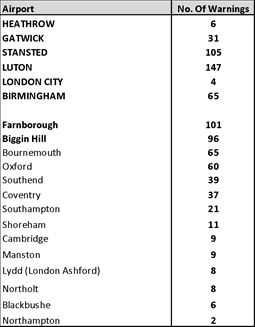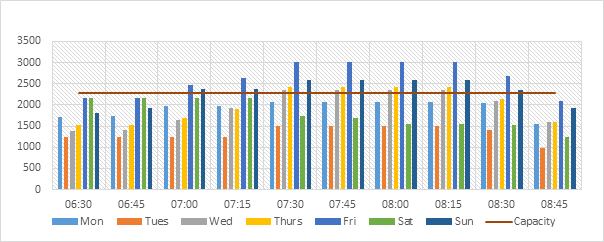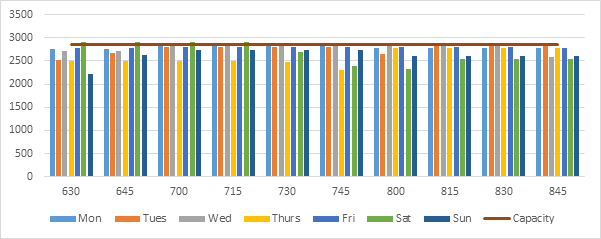Background
Dubai International Airport has two close-parallel runways. The northern runway was rehabilitated in 2014 and the southern runway was approaching the end of its design life. The Chief Executive Officer of Dubai Airports announced to the world on 21 February 2018 that the Southern Runway (12R-30L) at Dubai International Airport (DXB) would be closed for 45 days for rehabilitation in April and May 2019.
The Southern Runway Rehabilitation (SRR) project planned to strengthen and resurface the runway and the adjacent taxiway involving the placement of approximately 60,000 tonnes of asphalt and 8,000m3 of concrete. At the same time, over 5,500 runway lights would be replaced with the latest technology and 800 km of primary cables would be replaced.
It’s a mammoth task, needing to close a runway at an airport that operates 24 hours a day and representing a unique challenge. At other congested airports there is usually either a period of low demand (like the night) or the airport has sufficient runways to cope with the reduced capacity with minimal disruption. Neither of these options exist at DXB and the single runway capacity is insufficient to maintain a full flying programme. A temporary and severe reduction in flights to fit within the lower capacity was therefore necessary.
ACL gained valuable experience from the delivery of the northern runway closure in 2014 and was committed to managing the slot process to maximise the use of available capacity. Behind the scenes, ACL had the complex job of managing the reduction in flights, while maintaining its principles of fairness, transparency and non-discriminatory processes.
Capacity Reduction and the Allocation of Slots
Prior to the announcement of the closure, ACL performed scenario testing, using data from previous seasons, to predict and determine best outcomes for a reduction in capacity and how to manage this process. This utilised knowledge gained during the Northern Runway Rehabilitation (NRR) project, along with assessing impacts driven by changes to traffic mix. This work resulted in the decision to reduce capacity fairly by up to 50% across the airport whilst trying to protect those carriers that only operated a single frequency each day. At initial coordination the overall reduction was 32.2% with 98.6% of capacity allocated.
In order to facilitate the reduction, the coordination process for the IATA Summer 2019 season was advanced by six months and followed the same timeline as Winter 2018. ACL supported this change with a series of actions, including:
- Advanced distribution of the SHL’s and ongoing monitoring
- Briefings at Coordination Committees
- Split submissions with changes and requests for reinstatements and timing flexibility submitted in May 2018 and new requests in October 2018
- Development of a Local Rule in support of the closure
- Continuous review of capacity utilisation with the view to amend the local rule to make use of all available capacity
- Development of a policy to determine historic rights in the subsequent season
To promote schedule reductions, ACL provided guidance on alleviation against the utilisation criteria and took a pragmatic view on cancellations. ACL acknowledged that carriers may relocate services for the entire season or for alternative periods as a result of the runway closure.
Dubai World Central Airport (DWC) was used as alternative capacity and was designated as IATA Level 3 – Coordinated for the period of the closure, bringing with it extra workload to manage slots at this normally less busy facility.
Disruption Prevention & Management
ACL collaborated with Dubai Airports to create the DXB SRR Disruption Prevention & Management Policy. This, together with the ACL Local Rule, acted as guidance and highlighted the risks to the airport community and the management procedures to be undertaken in a disruption period, including demand and slot management.
For the duration of the closure, a Daily Ops Overview viewer was created by ACL. This outlined the required number of cancellations for a given disruption period that would be required in the event of disruption, the aim being to recover to normal operations within 24 hours. To ensure fairness should single daily operators be required to cancel, ACL assigned a randomly generated Slot Withdrawal Number to an operator for each day of the SRR. If a disruption had lasted more than 6 hours, the Slot Withdrawal Number listing would have been used to decide which flights to cancel.
ACL was available 24 hours a day to respond should the disruption policy be activated. ACL would have activated its emergency plan and commenced the reduction of planned operations in line with the policy.
All this planning was put to live use when ACL was required to activate further cancellations to facilitate the calibration of the southern runway. During the calibration process no flights were permitted at all. ACL’s team worked extended hours to contact operators across the world to inform them of the circumstances and worked closely with carriers to achieve cancellations and re-scheduling during the disruption.
During the Southern Runway Rehabilitation period
ACL’s staff operated extended hours throughout the runway work period in both ACL’s London and Dubai offices to coordinate DXB and DWC to manage day to day slot requests and provide additional reporting.
Extensive Slot Monitoring was undertaken to assess performance of operators and drive improved slot adherence. Operators were advised of the need to have punctual performance during the closure to maximise the available capacity. ACL monitored No Slot and Off Slot operations, and Equipment Discrepancies, at both DXB and DWC.
At 17:54 Local Time on 30 May 2019, the first aircraft landed on the newly refurbished and tarmac Southern Runway (12R-30L), marking the reopening of the runway and DXB returning to full capacity. In addition, during the SRR period, Dubai’s second airport, DWC, handled an increase of nearly 700% in traffic.
ACL is proud to have worked to support Dubai Airports with this huge, high profile project and to have played its part in ensuring that as many flights as possible operated. This experience will be invaluable to future disruption projects whether in Dubai or at one of ACL’s 39 other airports across the globe.





